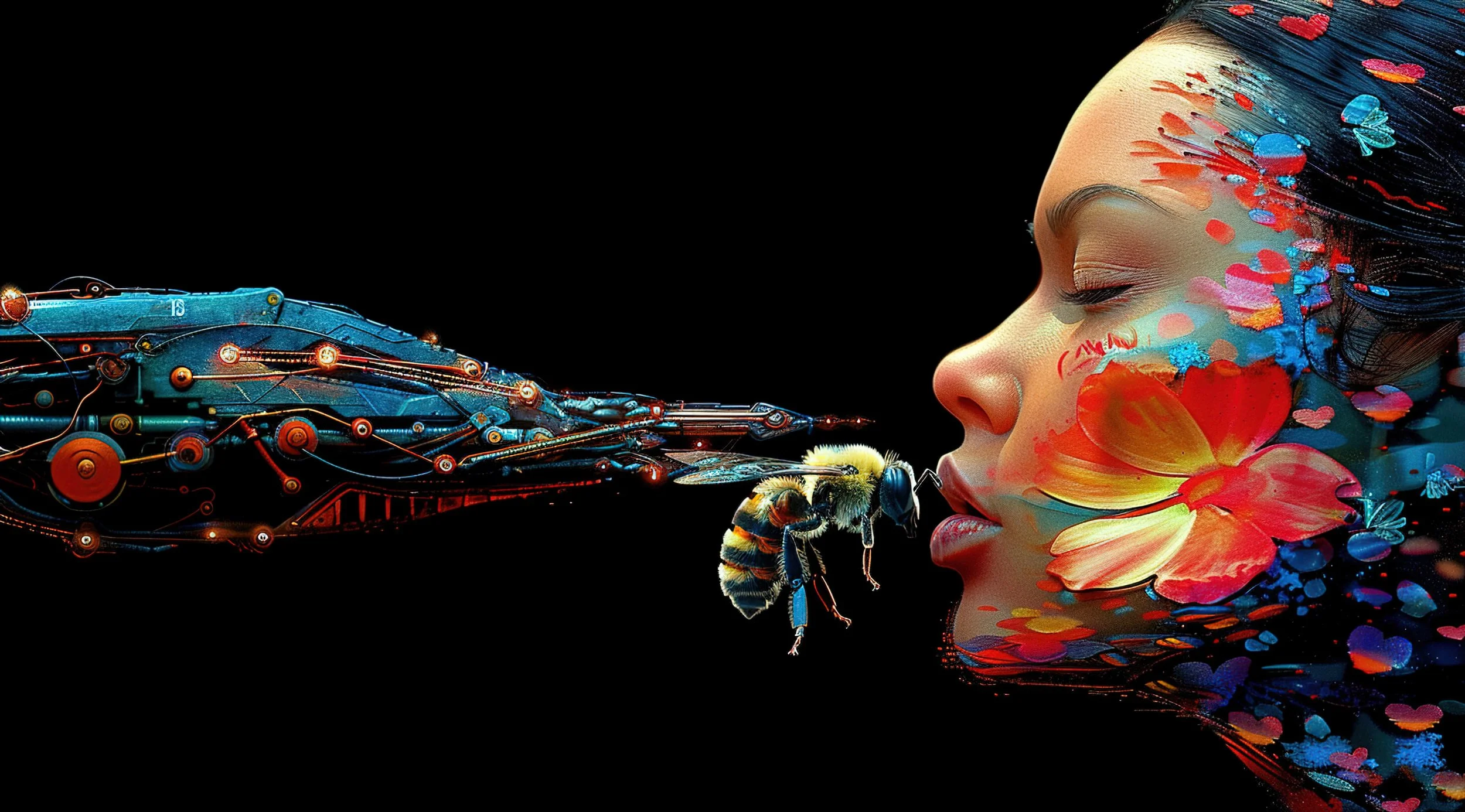Artists Collaborate with AI
Abstract:
The intersection of artificial intelligence and creative expression is reshaping the roles of designers and artists in 2025. AI-augmented creativity empowers humans to work alongside algorithms, unlocking new forms of innovation in design, art, music, and media. This article explores how AI is being integrated into creative workflows, enhancing rather than replacing human ingenuity. It examines tools, techniques, ethical concerns, and the evolving definition of creativity in an era of human-algorithm collaboration.
Keywords:
AI Creativity, Generative Design, Human-AI Collaboration, Creative Technology, Algorithmic Art, Machine Learning, Digital Art, Computational Design, Creative Tools, Ethics in AI
Introduction:
Artificial intelligence is no longer confined to analytical and predictive tasks; it is now a co-creator. In 2025, artists, designers, and creative professionals are increasingly working with intelligent systems to generate ideas, refine visuals, and even co-compose music. This partnership between human intuition and machine learning is opening the door to creative possibilities that were previously unattainable. Rather than replacing creative professionals, AI is enhancing their capabilities—augmenting imagination, speeding up iterations, and offering entirely new aesthetic approaches. This article investigates the collaborative space where creativity meets code and highlights how AI is redefining the boundaries of artistic and design expression.
1. Generative Tools in Design and Art
AI-driven generative tools have revolutionized design workflows. Platforms like Adobe Firefly, DALL·E, Midjourney, and Runway ML enable artists to create images, videos, and patterns using text prompts or by training custom models. Designers use these tools to generate concept art, mood boards, color schemes, and 3D prototypes in minutes. In architecture, generative design helps optimize space, materials, and aesthetics. These tools empower creators to explore hundreds of variations quickly, transforming how visual experimentation is approached.
2. Human-AI Co-Creation in Music and Storytelling
In music and narrative arts, AI is being used not as a substitute but as a collaborator. Musicians use AI tools like AIVA and Amper Music to compose original scores, layer harmonies, or remix soundscapes. Writers use AI for ideation, character development, or plotting. While the algorithm provides patterns and possibilities, the human artist brings emotional depth, thematic cohesion, and final judgment. This co-creation process allows creatives to break past their own mental blocks and explore uncharted directions.
3. Rethinking the Creative Process
AI augments the creative process by accelerating ideation, expanding stylistic choices, and generating suggestions based on historical and personal data. This doesn’t diminish creativity—it challenges the notion that originality must come solely from the human mind. Designers and artists become curators and editors of AI-generated outputs, guiding the machine’s suggestions through taste, intuition, and cultural awareness. In doing so, they reclaim their role as storytellers while embracing a more iterative, feedback-driven model of creation.
4. Ethical Considerations in Algorithmic Creativity
With AI in the creative field, new ethical questions arise. Who owns AI-generated art? Should algorithms trained on copyrighted materials be allowed to generate derivative works? What happens to human labor in a world where machines can produce content at scale? In 2025, artists and regulators are actively debating these concerns. Some platforms now offer opt-in training datasets to respect creator rights, while others include attribution metadata for transparency. Responsible use of AI in creativity involves not just technical skill but also ethical sensitivity and legal awareness.
5. Education and the Future of Creative Professions
Educational institutions are beginning to integrate AI tools into design and art programs. Students are learning to work with algorithms as creative collaborators—developing both technical fluency and critical thinking. The next generation of designers and artists will be expected to understand machine learning principles and the ethical dimensions of generative work. AI literacy is becoming a foundational skill in creative fields, reshaping what it means to be a professional artist or designer.
Conclusion:
AI-augmented creativity is not about replacing human imagination—it’s about amplifying it. By integrating intelligent systems into creative workflows, artists and designers are gaining access to powerful tools for expression, experimentation, and collaboration. As these tools become more advanced and accessible, the nature of creativity itself continues to evolve. In 2025, successful creatives will be those who embrace AI not as competition, but as a partner—leveraging its strengths to push their own ideas further than ever before.
Resources:
Adobe Firefly – Generative AI for Creatives: https://www.adobe.com/sensei/generative-ai/firefly.html
AIVA (Artificial Intelligence Virtual Artist): https://www.aiva.ai/
Runway ML – Creative Tools Powered by AI: https://runwayml.com/
OpenAI – DALL·E Image Generator: https://openai.com/dall-e
Creative Commons & AI Ethics Guidelines: https://creativecommons.org/

